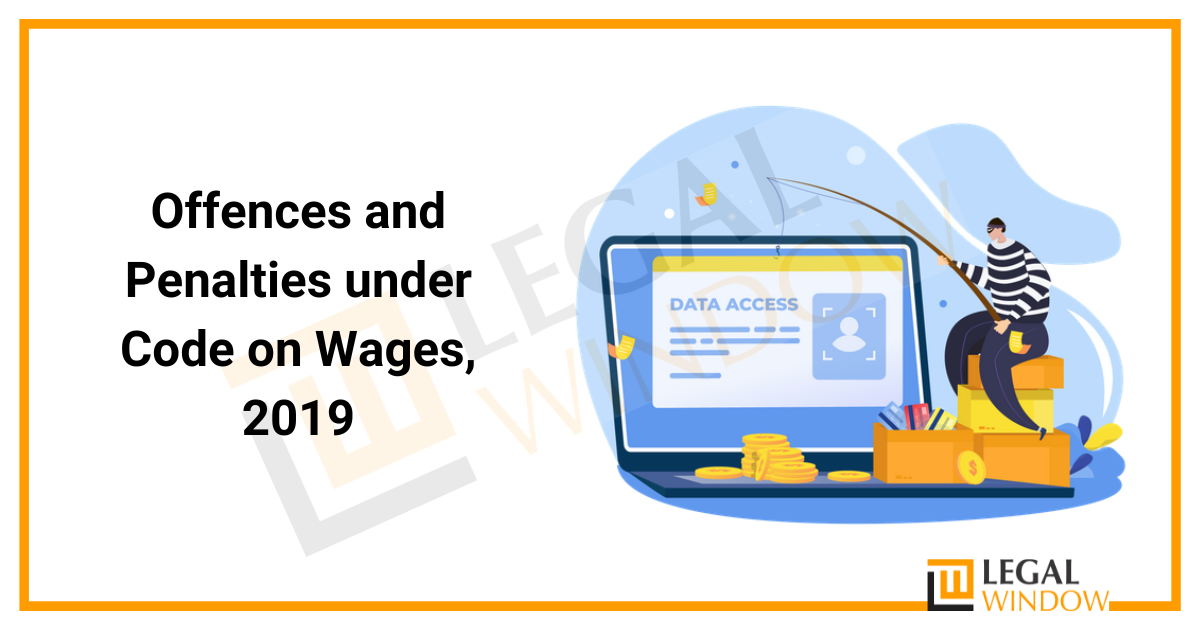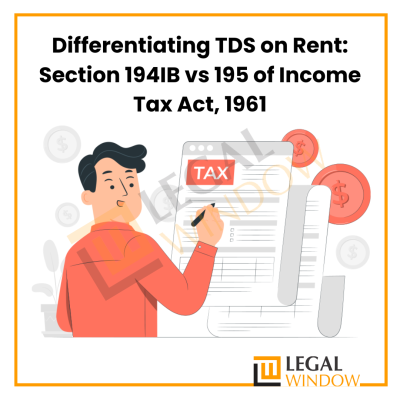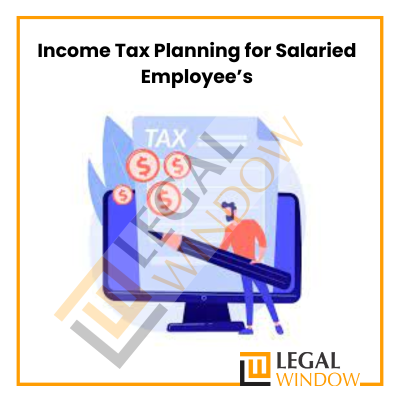
The concurrent list in the Indian Constitution includes labour-related legislation, which indicates that both the Central Government and the State Government are equally competent and entitled to pass labour laws. Currently, more than 45 central laws and over 100 state laws have been adopted for labour welfare, with many of them overlapping. Codes on Wages 2019, (“Wage Code” or “Code”) is awaiting notice of its effective date. The Wage Code’s goal is to combine the four current wage-related labour regulations into a single integrated code.
Because all four statutes manage different parts of the same issue, wages, the Government’s goal is to unify and cover all four under a single statute, the Wage Code. Thus, the Wage Code is the first step toward implementing, enforcing, and harmonising the country’s labour regulations. In this article, we’ll discuss Code on Wages, 2019.
Short Glimpse on Code on Wages, 2019
Despite the presence of legislation governing employees’ rights to minimum wages, bonus eligibility, and pay equity, up to 80% of India’s entire workforce—approximately 300 million workers—are not protected by any social security provisions. The vast majority of those who do not receive any of these benefits work in the unorganised sector. To combat employee exploitation and to unify the very diverse labour rules in each area, the labour department has suggested a new Wage Code.
The Code on Wages, 2019, is now in the draught stage after getting agreement from both chambers of parliament and is expected to be implemented by the fiscal year 2023.
There is also a renewed emphasis on other critical issues, such as broadening the definition of employee and employer, attaining equitable coverage across organised and unorganised sectors, and raising contributions to social security funds.
The Central Government has issued four labour codes in order to integrate and streamline the country’s labour laws:
- Code on wages;
- Industrial relations code;
- Social security and welfare code; and
- Occupational safety, health, and working conditions code. This is the first of four instalments on each of these codes.
Coverage and Applicability of Code on Wages, 2019
Employees in both the organised and unorganised sectors will be covered by the Code. Wage payment provisions in the Code will apply to all employees, regardless of wage ceiling or type of employment, whereas the Payment of Wages Act, 1936 was only applicable to factories, certain specified establishments, and employees drawing monthly wages of up to INR 24,000, and the Minimum Wages Act, 1948 was only applicable to scheduled employments.
The Central Government will make wage-related choices for employment in the railway, mining, and oil fields, among other sectors, under this Code, while the State Government would make decisions for all other sectors. The term of ’employee’ now includes contractors, ensuring that even contractors are eligible to be paid the Code’s minimum wage.
Employees vs. Workers under Code on Wages, 2019
The Code establishes two distinct meanings of ’employees’ and ‘workers’. Individuals in supervisory, managerial, and administrative roles are included in the definition of ’employee,’ whereas individuals employed in a supervisory capacity drawing a monthly salary exceeding INR 15,000 are excluded, while sales promotion employees and working journalists are specifically included. Because the definition of employee is broad, it implies that such categories of employees will also be covered by the Wage Code, in contrast to the Minimum Wages Act, 1948, which defined ’employee’ as any person employed for hire or reward to do any work, skilled or unskilled, manual or clerical, in scheduled employment for which minimum rates of wages have been fixed.
However, there are contradictions between the remuneration of ’employees’ and ‘workers’ under the Code. For example, under Section 6(6) of the Code, only “workers” and not “employees” are specified for determining minimum pay rates.
The Worker under Code on Wages, 2019
Any worker who does skilled, semi-skilled, unskilled, manual, operational, supervisory, management, administrative, technical, or clerical labour in any business.
Exclusions: Apprentices and personnel of the military forces are not included.
Working journalists and “sale promotion employees” both fall within the definition of “anyone hired in any sector for pay or reward to conduct any manual, unskilled, technical, operational, clerical or managerial labour.” For the purposes of an Industrial Dispute, the individual who was fired, released, retrenched, or otherwise terminated, or who suffered as a result of the above, is the one who initiated the conflict.
Gender discrimination in salaries and recruitment of employees for the same or comparable job is forbidden under the Code, except when the employment of women in such work settings is prohibited/restricted by law. ‘Work of comparable kind’ is described as ‘work for which the expertise, effort, experience, and responsibility required are the same’.
The Employer under Code on Wages, 2019
In addition to the regular definition of a person who employs employees in its establishments, the Code has expanded the definition of ’employer’ to include an occupier or manager of a factory, a person with ultimate control over the company’s affairs, a managing director, contractor, and legal representative of a deceased employer.
The current legislation either did not include such a description or only specified it in regard to factories and institutions where authorities had ultimate authority. This was insufficient, resulting in uncertainty when defining the character of an employer.
Wage under Code on Wages, 2019
Wages are defined under the Code to encompass any payment that may be stated in monetary terms, such as salaries, allowances, and so on.
Trying to improve the Minimum Wage
Employers are prohibited under the Code from paying wages less than the authorised minimum wage. The Central and State Governments will announce the minimum wage. These minimal salaries must take into consideration workers’ talents, geographical locations, hours of work or piece of work, arduousness of labour such as temperature, humidity, dangerous vocations or procedures, and so on. The Code applies equitably to all employees in an organisation.
The minimum wage will be amended and evaluated every five years by the Central or State Governments.
The new concept of “floor wages” is established by this Code. According to the Code, the Central Government would establish a baseline pay based on workers’ living conditions as well as geographical locations. The competent government (central or state) can set the minimum wage rate based on the floor pay rate. The applicable government’s minimum wage cannot be less than the floor pay. If the present minimum wages set by the relevant government are greater than the floor wage, they cannot be reduced.
Payment of Wages
A new wage payment provision has been added, allowing salaries to be paid in current coin, currency notes, by check, by crediting the earnings to the employee’s bank account, or by electronic means.
The salary term is currently fixed by the employer under the Code as daily, weekly, fortnightly, or monthly, to guarantee that it does not exceed one month.
Wage payment deadlines have also been established. If an employee is removed, fired, retrenched, resigns, or becomes jobless as a result of an establishment’s closure, his or her pay must be reimbursed within two working days of such removal, retrenchment, or resignation.
This definition now includes the term “resignation,” which is a crucial issue for the employer to remember.
The number of hours that constitute a typical working day may be determined by the relevant authorities. Employees who work more than eight hours in a typical working day are entitled to overtime pay, which must be at least twice the regular rate of pay.
Under the Code, an employee’s wages may be withheld for a variety of reasons, including:
- Penalties;
- Leave of absence;
- Employer-provided accommodation; or
- Repayment of advances made to the employee, among other things.
These deductions are limited to 50% of the employee’s total salary. If the deductions exceed 50%, the excess can be recovered under the criteria outlined in the Wage Code. If the employer’s deductions are not deposited with the trust or in a Government fund, the employee cannot be held liable for the employer’s failure to do so.
Bonus Payment under Code on Wages, 2019
The Code’s provisions on bonus payment apply to all employees whose earnings do not exceed a particular monthly amount as determined by the appropriate authorities. Bonus will be given from allocable surplus (calculated in respect of any accounting year after depreciation, direct taxes, or other sums defined by the Central Government from gross earnings for that year), which is at least:
- 33% of salaries; or
- 100, whichever is greater.
In the case of banking enterprises, the bonus payable is 60% of the allocable excess, and in the case of other institutions, it is 67% of the allocable surplus.
In a fiscal year, an employee can get a maximum bonus of 20% of his yearly pay. The Code further specifies how to calculate set on and set off for allocable excess after the fifth accounting year in which the employer sells the products produced, manufactured, or given. For the purposes of calculating bonuses under the Code, any departments, enterprises, or branches of an establishment should be regarded as part of the same institution.
If an employee does not work for all working days in an accounting year, the bonus is correspondingly lowered by lowering the minimum bonus if the such bonus is greater than 8.33% of the payor wage of the days the such employee worked in that accounting year.
As a step forward, the disqualification for sexual harassment convictions is now an extra element that did not exist under the repealed statutes. All qualified employees must be awarded a bonus within 8 months of the end of an accounting year.
Inspector-Cum-Facilitator under Code on Wages, 2019
The Code calls for the appointment of an Inspector-cum-Facilitator to conduct employer and employee inspections to ensure compliance. Furthermore, the Inspector-cum-Facilitator reserves the authority to investigate any individual on the business premises and confiscate, search, or make copies of earnings if the employer has committed an offence. The inspection will be carried out in accordance with a plan determined by the competent authority.
After giving the employer an opportunity to comply with the Code’s obligations, the Inspector-cum-Facilitator may commence an action under the Code. If the employer follows the written directions of the Inspector-cum-Facilitator within the specified period, he or she cannot proceed against the employer. This ensures that the employer gets the opportunity to be heard. However, if the offence is committed again within 5 years after the original offence, such a chance will not be offered.
In keeping with the government’s digitisation objectives, the Code now facilitates electronic inspection and the retrieval of inspection-related information via a web-based portal.
Offences and Penalties under Code on Wages, 2019
The following are the cases of Offences and Penalties under Code on Wages, 2019:
- When an employer provides a lower salary to an employee
If an employer pays an employee less than the amount owing to such employee, the employer may be fined up to Rs. 50,000/- (Section 54 (1)(a)). - Recurrence of offence covered by section 54(1)(a))
If the same violation under section 54 (1)(a) is committed again within 5 years, the employer faces imprisonment for up to 3 months, a fine of up to Rs. 100,000/-, or both. (Section-54(1) (b)) - When the Employer violates any other provisions/rules/orders
If an employer violates any other provisions/rules/orders, he may be fined up to Rs. 20,000/- (Section 54 (1) (c)). - Failure to maintain or improperly maintaining records
If records are not maintained or are not kept properly at the establishment, the employer may be fined up to Rs. 10,000/- (Section 54(2)). - Officers’ Appointment and Penalty Imposition
The competent government should select an official not lower than the rank of Under Secretary to the Government of India/State to impose penalties in specific situations specified by sections 54(1)(a), (c), (2), and Section 56 (7), Section-53. - Company Law Violations
If a company commits an infraction under this code, any person who was in control of and accountable to the company for the conduct of the company’s business at the time the crime was committed, as well as the company, will be judged guilty of the offence and will be penalised (Section-55). - Combination of offences
Any offence committed under this law, excluding those punished by imprisonment alone or imprisonment and fine must be compounded by a Gazetted Officer designated by the competent government for an amount equal to half the maximum fine authorised for such offence (Section 56). - Cognizance of Offence
The court will take notice of an offence under this code based on a complaint submitted by the appropriate government/authorized officer/employee/registered trade union/inspector-cum-facilitator. The Metropolitan Magistrate/Judicial Magistrate First Class will hear cases under this code (Section 52).
Way Forward
There has been significant criticism that the Labour Codes are too mild and do not provide for appropriate punishment of employers. That is not exactly correct.
It is important to note that such a chance will not be offered to the employer if the employer commits a violation of the same kind of such provisions within three years of the date of the first violation under the Code on Social Security and the Occupational Safety Code. The period under the Wage Code is 5 years from the date of the first infraction.
As a result, we can observe that rules pertaining to fines and offences under the Labour Codes have been framed to encourage ease of doing business by decriminalising corporate crimes and economic offences.
Connect to our Experts at Legal Window if you want more information about Code on Wages, 2019. Our Experts would be Happy to Help.
LegalWindow.in is a professional technology driven platform of multidisciplined experts like CA/CS/Lawyers spanning with an aim to provide concrete solution to individuals, start-ups and other business organisation by maximising their growth at an affordable cost. Our team offers expertise solutions in various fields that include Corporate Laws, Direct Taxations, GST Matters, IP Registrations and other Legal Affairs.
Categories
- Agreement Drafting (23)
- Annual Compliance (11)
- Change in Business (36)
- Company Law (148)
- Compliance (90)
- Digital Banking (3)
- Drug License (3)
- FEMA (17)
- Finance Company (42)
- Foreign Taxation (6)
- FSSAI License/Registration (14)
- GST (120)
- Hallmark Registration (1)
- Income Tax (202)
- Latest News (34)
- Miscellaneous (165)
- NBFC Registration (8)
- NGO (14)
- SEBI Registration (6)
- Section 8 Company (7)
- Start and manage a business (21)
- Startup/ Registration (130)
- Trademark Registration/IPR (40)
Recent Posts
About us
LegalWindow.in is a professional technology driven platform of multidisciplined experts like CA/CS/Lawyers spanning with an aim to provide concrete solution to individuals, start-ups and other business organisation by maximising their growth at an affordable cost.









